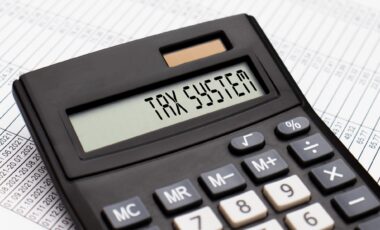Starting from the 2025-26 financial year, the Australian Taxation Office (ATO) has confirmed that the motor vehicle cents-per-kilometre deduction rate will remain at 88 cents per kilometre.
While this may seem like a straightforward update, it has caused frustration among many workers, especially those who rely on this deduction to offset the cost of business-related travel. The decision not to increase the rate has been criticized by tax experts, who argue that it fails to keep pace with rising fuel prices.
The 88-cent rate allows Australians to claim up to $4,400 in motor vehicle deductions per year, for travel up to 5,000 kilometres. However, as fuel costs have surged in recent years, many workers feel that this rate no longer covers their expenses.
Belinda Raso, director of Tax Invest Accounting, voiced her disappointment with the ATO’s decision, describing it as a “kick in the teeth” for taxpayers. Raso had expected the rate to rise to at least 92 cents to help compensate for the growing fuel costs.
How the Cents-Per-Kilometre Method Works
The cents-per-kilometre method is one of two ways to claim car expenses for work-related travel. Under this method, taxpayers can claim a fixed rate for each kilometre driven, up to 5,000 kilometres annually. It covers all car-related expenses, including fuel, registration, maintenance, and insurance, without requiring detailed records or a logbook. However, this method does require the taxpayer to track the purpose of their travel, such as the reason for the trip and how often it occurs.
While the simplicity of the cents-per-kilometre method is appealing, it may no longer be the best option for everyone due to rising fuel prices. Many tax professionals are now advising workers to consider using the logbook method instead. Although this method requires more detailed records, it may result in larger deductions for some people, particularly those who drive more frequently or have higher vehicle-related expenses.
ATO $4,400 tax deduction update sparks warning for millions of Aussie workers: 'Kick in the teeth' https://t.co/1OKyJ5X6iu
— Yahoo Finance Australia (@YahooFinanceAU) July 16, 2025
Alternatives for Senior Workers and Those Driving Longer Distances
For workers who exceed the 5,000-kilometre limit or find the cents-per-kilometre method insufficient, the logbook method may be a better option. This method involves keeping detailed records of all trips, including the date, purpose, and kilometres driven, to determine the proportion of car expenses that are work-related. While it requires more effort, the logbook method could provide higher deductions, especially for individuals who drive extensively for their work.
Raso suggests that even those who drive less than 5,000 kilometres should consider switching to the logbook method to ensure they are maximizing their tax benefits. The current fuel prices, coupled with the ATO’s stagnant cents-per-kilometre rate, make it crucial for workers to assess whether the standard deduction method is still their most cost-effective option.
What You Need to Do Before Tax Time
With the 2025-26 financial year approaching, taxpayers should begin preparing for the upcoming tax season. If you’re planning to use the cents-per-kilometre method, it’s important to track your work-related travel and ensure that you don’t exceed the 5,000-kilometre limit. Alternatively, if you choose to use the logbook method, start recording your travel details now, as this will be necessary when filing your tax return.
Tax professionals also recommend reviewing your vehicle-related expenses and exploring other potential deductions, such as those related to maintenance and insurance, to ensure you’re making the most of it. As fuel prices continue to rise, taking the time to review your options could help ease the financial burden during this time.









